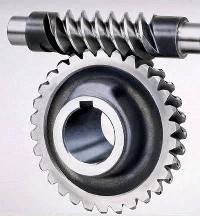The radioactive environments can be significantly different from each other depending on the dose rate emitted and with them the requirements of the manipulators or robots used within them. In order to cope with the less demanding doses, it is likely enough to mount a hard-rad force/torque sensor in the robotic gripper, increasing with this the total cost of the robot or developing a customized shielding for a conventional sensor equipped with amplifier. When the radiation dose rate becomes very high, a hydraulic solution can be implemented with the consequent leaking risk. If that risk is wanted to be totally discarded as well as to maintain a solution with components off-the-shelf, when the dose rate increases such as in ITER-like projects, a sensorless approach can be used. This term indicates the indirect end-effector’s force and actuator’s torques estimation without using force and torque sensors. My research has proposed a sensorless force estimation of industrial robots applied to teleoperation in radioactive environments.
Conventional master-slave devices have exploited one of the main requirements for bilateral teleoperation which is the backdrivable design of the manipulators [1] [2]. This characteristic facilitated the use of the positional error between master and slave to estimate the external forces on the slave side. Nevertheless, the conventional industrial robots are non-backdrivable due to its mechanical properties such us, high reduction gears, high friction or non-backdrivable gear design, i.e. worm gears.

Figure 1-Worm gears. Retrieved from http://www.societyofrobots.com
Specific solutions of rad-hard dexterous and backdrivable manipulators are more costly than standard industrial solutions, thus, my approach looks into the possibility of adapting conventional robots to be used in those facilities. It would be very useful to take advantage of the big stock of industrial manipulators on the market and, through basic modifications to ensure radiation resistance, achieve a sensorless remote handling solution at a competitive price. This would also help robot manufacturers to develop new designs where the teleoperation in such environments is considered as a possibility. This would ensure the correct selection of mechanical components so the radiation hardness is guaranteed.
This approach would enhance the cost-effectiveness of the remote handling solution by avoiding using expensive sensors, or specific manipulator design. This would also avoid the installation of new sensor´s wiring, developing new technology to shield the sensor’s amplifier by limiting the use of electronic equipment.
The sensorless approach would avoid replacing every industrial robot based on electrical actuators for a new and relatively high cost hydraulic solution with the disruptions that this change would cause. This method is also applicable when a redundant system is required. If a traditional electrical slave equipped with force sensor is used, it would be convenient to provide the system with a redundant force estimation that allows the manipulator to continue its tasks in case of failure of any sensor when the device cannot be easily removed from inside of the facility.





































Leave a comment